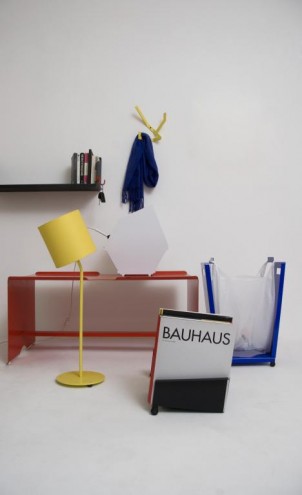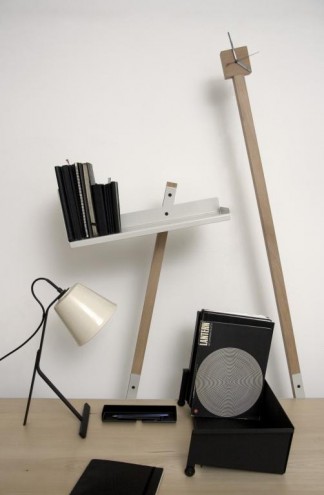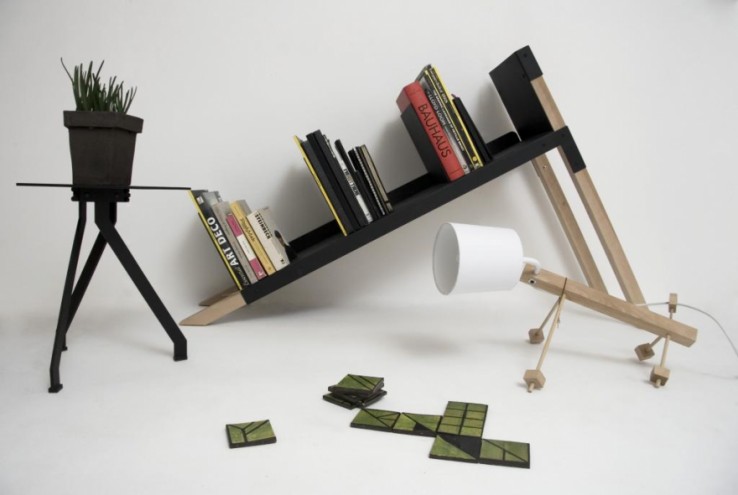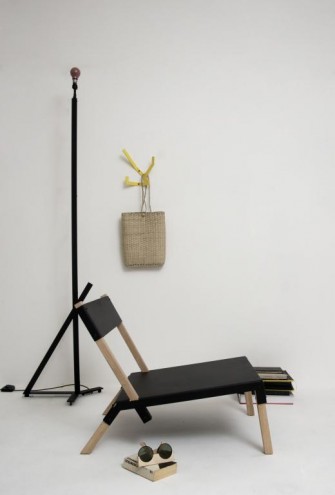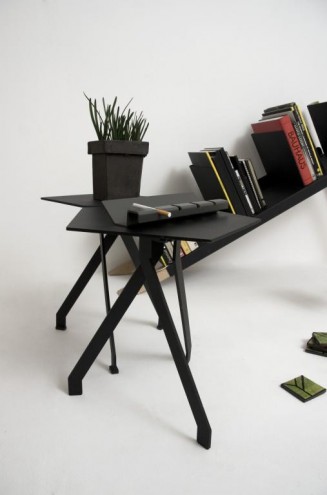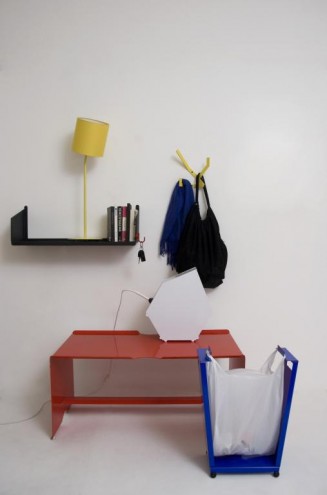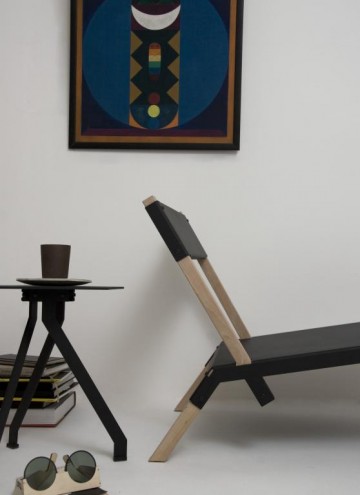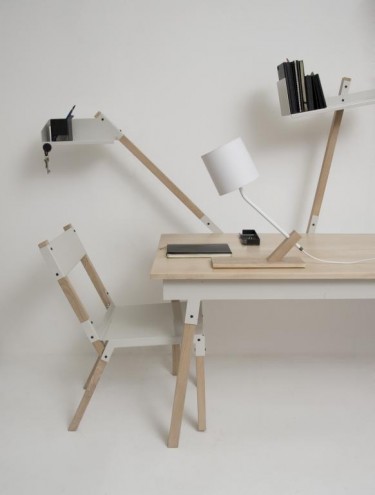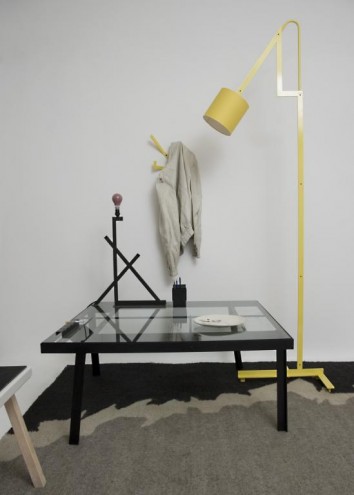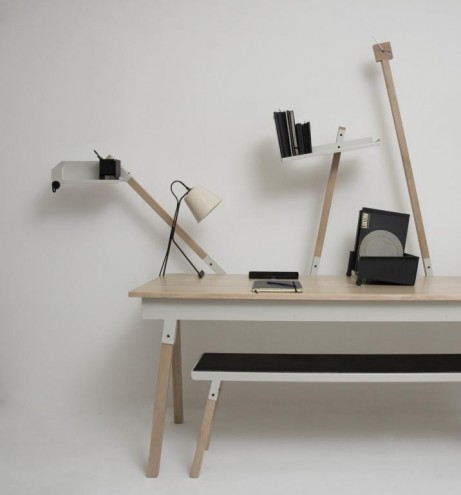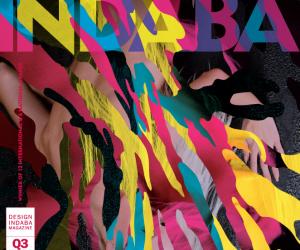First Published in
Who came first: Bauhaus or Ndebele? It’s a moot point for Jo’burg-based design studio Dokter and Misses. Working out of the grimy suburb of Brixton at the foot of the SABC tower, Adriaan Hugo and partner Katy Taplin have tapped into a style that is as indigenous as it is international.
“When South Africans come in here they think our work is so African, and when Germans come in here they think it’s so German,” laughs Hugo. “We’ve studied design and we are aware of what is happening internationally. But we live in Johannesburg and we have to make sense of our environment and how we fit into it.”
Combining Hugo’s background in industrial design and Taplin’s background in graphic design, Dokter and Misses have allowed their style to be dictated by typographical forms and industrial production methods. “We start with a two-dimensional drawing and then try to make it into an object, while still keeping its graphic quality,” explains Taplin.
This approach grew from Dokter and Misses’s first product – cardboard handbags. A flat-pack design that is folded into a three-dimensional object, it also pokes fun at the transience of fashion by making a seasonal item out of a biodegradable, throwaway material. Since this design in 2004, their range has expanded to include vests, jewellery, ceramics, postcards, furniture and lights.
In 2007, Dokter and Misses opened their flagship shop at the 44 Stanley design district. The shop has become a beacon for creative hipsters, hosting exhibitions by Zimbabwean artist Kudzanai Chiurai and launching collaborations with Givan Lötz, Joe Paine and others. The location also allows the label to tap into the tasteful tourist market. “We would like people to come to South Africa and buy a souvenir T-shirt that doesn’t have the big five on it,” Taplin shrugs.
Denying typical cultural references and national stereotypes, Dokter and Misses have resorted to abstraction and truth to material. Yet, what infuses their retro modernism with a futurist expression of Africa is the infusion of their surroundings’ industrial capabilities. “The manufacturing base in Jo’burg has a hand in what we do and look like. Since using cutting-edge technologies isn’t really an option for us right now, we focus on the basics and push them as for as we can. For instance, our mono-print T-shirts have almost become a trademark for us,” explains Hugo.
For their furniture range too, they aim to use the minimum amount of material for the maximum amount of output given the supplier infrastructure of their city. “Making something that is super functional but is difficult to produce is not practical. We really want our products to be used and so we’re working on getting cost and production time down.” Hugo goes on.
Although Dokter and Misses’s furniture might not quite be priced for the general man on the street yet, Hugo’s public work for the Ellis Park Train Station has put it in the line of sight. Along with a string of awards and nominations, Dokter and Misses’s notoriety is growing.
In their most recent range, “Easy Now”, Dokter and Misses have shirked the bright colours of their Bauhaus forefathers, which came through in their first range, which they described as “Bauhaus meets Dr Alban”. Rather introducing natural colours, and wood, cork and ceramic materials, Easy Now seems less raw-boned and combines Hugo’s strong constructional lines with Taplin’s graphics, as well as Givan Lötz’s drawings and sound. “It’s about taking a step back, being human, dirty, slowing down, walking, being on holiday: easy now,” reads the catalogue.
Nonetheless, it is more hardy and mature, suggests Hugo: “Our early stuff is very stark and aggressive and monochromatic. We wanted a break from this and, especially after seeing our new products age, we decided to do a range that is about how things get worn over time.”

